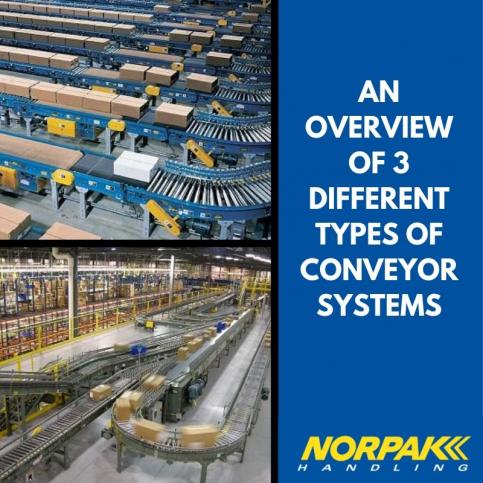Conveyor systems help run a plethora of industries today, including the automotive, aerospace, and manufacturing industries. Virtually everyone has interacted with a conveyor system or conveyor parts in their everyday life, at least if you have been to a supermarket or airport where they are used to facilitate important operations.
Considering their ubiquity in society, it is interesting that not a lot is known about conveyors or conveyor parts. In today’s blog, let’s go over a few popular conveyor types in order to better understand how conveyor systems help power modern production.
Each conveyor type is unique, catering to specific applications in order to best fulfill the needs of the customer.
1. Flexible Conveyors
While most conveyors have similar conveyor parts and overall functions, each conveyor type can be tailored to suit the particular needs of a business. Flexible conveyors are a great example of this. To accommodate the complex layouts of many facilities, particularly food processing facilities or grocery stores, flexible conveyors were developed to allow the conveyor to work around obstacles and travel in various pathways, keeping production going.
Flexible conveyors can achieve this thanks to their multi-flexing chains. Norpak Handling supplies both powered flexible conveyors and gravity flexible conveyors – the latter is powered by gravity, which means it does not utilize motor power sources to transport its load, unlike powered conveyors. Another common use of flexible conveyors is for loading and unloading packages into or from transport trailers.
2. Belt Conveyors
Belt conveyors are prized primarily due to their ability to work with items that have irregular bottom surfaces and small items that would otherwise fall in between rollers. Most of the conveyor parts and construction of a belt conveyor are identical to that of other conveyors, save for the addition of a belt.
Due to the friction-retaining properties of the rubber belt, it is also capable of transporting items through changes in elevation or from one level another (both inclines and declines). In fact, they are a much more economical function compared to vertical elevating or lowerating conveyors. Thanks to its versatility, it is one of the most popular types of conveyors.
3. Gravity Conveyors
Gravity conveyors are unique in this list due to the fact that they are unpowered. Relying on gravity to help transport items over a downward incline, gravity conveyors are more suited to items of heftier weight and with smooth, rigid bottoms (conveying surface), which can help them move faster and unassisted downwards. A gravity conveyor requires a minimum weight in order to function optimally. They can come with guard rails and end stops to give operators more control over the flow of production. Seek advice and assessment from experts in order to determine if your products can be transported effectively with gravity, as it is the most economical option out there.
These three examples are just some of many conveyor types that Norpak Handling supplies from our varied range of renown manufacturers. Norpak Handling is a leading Canadian conveyor equipment and systems solution provider, specializing in complete project integration services including maintenance and project management. If you’re looking for conveyor systems or conveyor parts, just give us a call and we will help you find the best material handling solution for your business.










